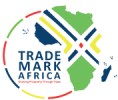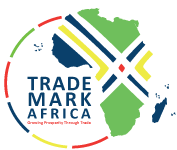Intra-African trade has long been a weak point hit upon by leaders looking to strengthen sustainable growth on the continent. Within certain regions, such as the West African Economic and Monetary Union, WAEMU (or by its French acronym, UEMOA), the East African Community (EAC), Southern African Development Community (SADC) or the Common Market for Eastern and Southern Africa (COMESA), regional economic unions have flourished along trade needs and cultural links.
The most recent African Economic Outlook (AEO) shows that despite varying degrees of economic growth and development, economic blocs have benefitted community members through not just increased trade, but income convergence, with UEMOA leading among them.
Incomes have narrowed at an average rate of 19.6 per cent between WAEMU’s richest and poorest countries over 15 years, according to AEO. In almost all WAEMU countries, the per capita GDP has risen compared to Côte d’Ivoire, the region’s leading economy. Benin and Senegal have caught up with Côte d’Ivoire, while remaining members Niger, Benin, Mali, Guinea-Bissau and Burkina Faso are still behind.
“This could mean that poorer countries grew faster than richer ones to narrow the gap. The convergence may also be explained by the slowdown of the Côte d’Ivoire economy during the country’s political crisis of the early 2000s,” the report stated.
African trade with the rest of the world, especially the European Union, has remained consistently high throughout a decade of growth and the 2008 economic crisis. However the ‘Brexit’ shake-up, along with a general downturn in commodities prices, puts more pressure on the need for diversified intra-African trade.
According to the AEO, intra-African trade has grown from 10 per cent of total trade in 2000 to 16 per cent in 2014—it is increasing, albeit it at a slow rate. However the report cites ‘mega trade blocs’ that are gaining ground. The Tripartite Free Trade Area (TFTA)—linking EAC, SADC, and COMESA—includes 19 countries, accounting for more than 59 per cent of continental output and 57 per cent of the African population. The TFTA also accounts for 25 per cent of intra-regional trade, where other blocs account for an average of 15 per cent. It is an unprecedented trade union on the continent, but the UEMOA countries are not a part of it. West African trade unions will rely on the formation of the proposed Continental Free Trade Area (CFTA), a pan-African trade agreement led by the African Union that it expected to come together in 2017.
In the meantime, trade within separate regional unions sharply varies. CEMAC has the lowest proportion of intra-regional trade at just 2.1 per cent in 2014, according to the AEO. SADC and the EAC are the most active, with 19.3 per cent and 18.4 per cent, respectively. UEMOA comes in next at 15.3 per cent, relatively high for the continent but low amongst regional trade unions.
Within the region, transportation finance, namely highways, has become the primary means of linking the eight countries. The African Development Bank (AfDB) is funding a Mali-Guinea highway and previously funded a west-east corridor from Senegal to Chad, linking several WAEMU members. The European Development Fund backed a Mali-Senegal route, and several multilateral lenders supported another west-east corridor than extends to Nigeria. One key project on the horizon is another highway to link Bamako, Mali with Côte d’Ivoire’s San Pedro port, also led by the AfDB.
Banks have also helped integrate the region. Togo-based Ecobank and Mali-based Bank of Africa have strong regional presences, as do several foreign internationals. As the AEO points out, regional banking operations require harmonised regulation and supervision frameworks, something the WAEMU bloc is strong in compared to other regional unions. It also is one of the few groups with a regional stock exchange, the Bourse Regional des Valeurs Mobilieres (BRVM) which allows companies to have multiple and cross-border listings.
Banking in WAEMU
Overall, the drop in oil prices over the past year has been credit positive for WAEMU countries. A March review by the International Monetary Fund (IMF) found that economic growth exceeded six per cent in 2015 while inflation averaged one per cent and monetary policy remained accommodative. Prices for the region’s two main exports, cocoa and groundnuts, remained buoyant, it said. However in an in-depth region report published in April, the IMF warned that impending trade liberalisation could take the teeth out of WAEMU’s trade tax revenue, necessitating other inflows.
The same report found that the banking sector in the region has been growing at a steady 15 per cent annual average over the past few years. This growth has mainly been on credit to the private sector, but sovereign exposure also rose to more than 26 per cent of total assets last year.
The IMF warned that WAEMU banks’ prudential indicators and regulatory requirements continue to be relatively weak compared to other African regions. According to the report, capital adequacy was 12 per cent in June 2015 compared to an 18 per cent average across other Sub Saharan African countries. Non-performing loans meanwhile rose to worrying levels; 15.8 per cent of total loans in 2014 and 33.5 per cent of banks’ capital. Efforts by the Banking Commission to improve regulations are just one element of the problem—the report noted stated that, “The position of WAEMU countries with respect to capital adequacy and credit quality may be worse if we take into consideration that capital adequacy in WAMU banking sector is still based on Basel I rules…and that loan classification rules are laxer than international requirements.” The IMF also estimates that 25 per cent of WAEMU banks on average are in violation of prudential requirements.
However there have been significant efforts by the regional central bank, BCEAO, and the BRVM Exchange to tackle these problems. In a policy statement on 25 June, Amadou Ba—the presiding BCEAO President and Senegal Minister of the Economy, Finance and Planning—emphasised policy improvements.
“Ministers [of the BCEAO]…underline the urgency of ensuring adequate risk management for security problems, unfavourable changes in commodity exports and deterioration of financial conditions internationally, to strengthen sustainable growth in member countries. They further encouraged member states to continue efforts to improve tax revenues and rationalisation of public expenditure, in line with the budget deficit plan to be in compliance with the EU standard of three per cent of GDP in 2019,” Ba said.
In an interview with Banker Africa, BRVM Exchange CEO Edoh Kossi Amenounve was optimistic. “Over the past three years, the BRVM has been boosted by the strong economic growth in the region and the promising prospects for development that are driving emergence over the medium-term, as well as by the peaceful political environment which is strengthening democracy in our region,” he said.
Source: CPI Financial
- Our Impact
- Annual Reports
- Impact Stories
- Research Hub
- Strategic Evaluations
- TMA DFID Independent Evaluation Reports
- Kenya Country Programme
- Uganda Country Programme
- Rwanda Country Programme
- Rwanda Electronic Single Window
- Export Development Programme
- Elimination of Non-Tariff Barriers to Trade
- Standards Harmonisation and Conformity Testing Programme
- The East Africa Customs and Freight Forwarding Practising Certificate Programme (EACFFPC)
- Single Window Information for Trade (SWIFT)
- Monitoring, Evaluation and Learning
- Media
- Who We Are
- What we do
- where we work
- Work with us
- Knowledge Center
- Whistle Blowing















